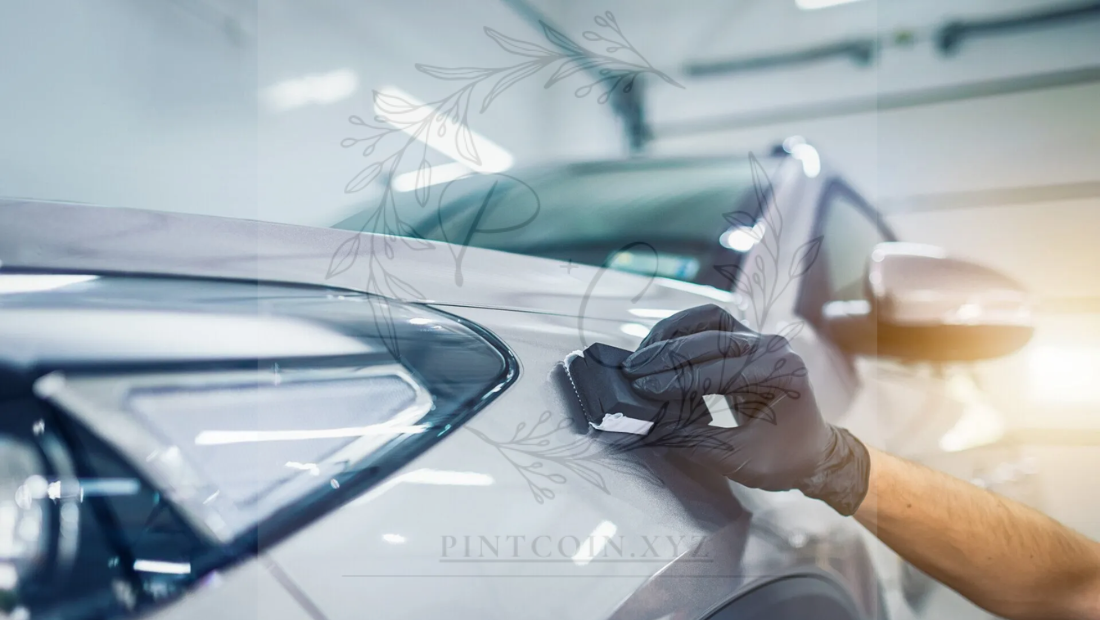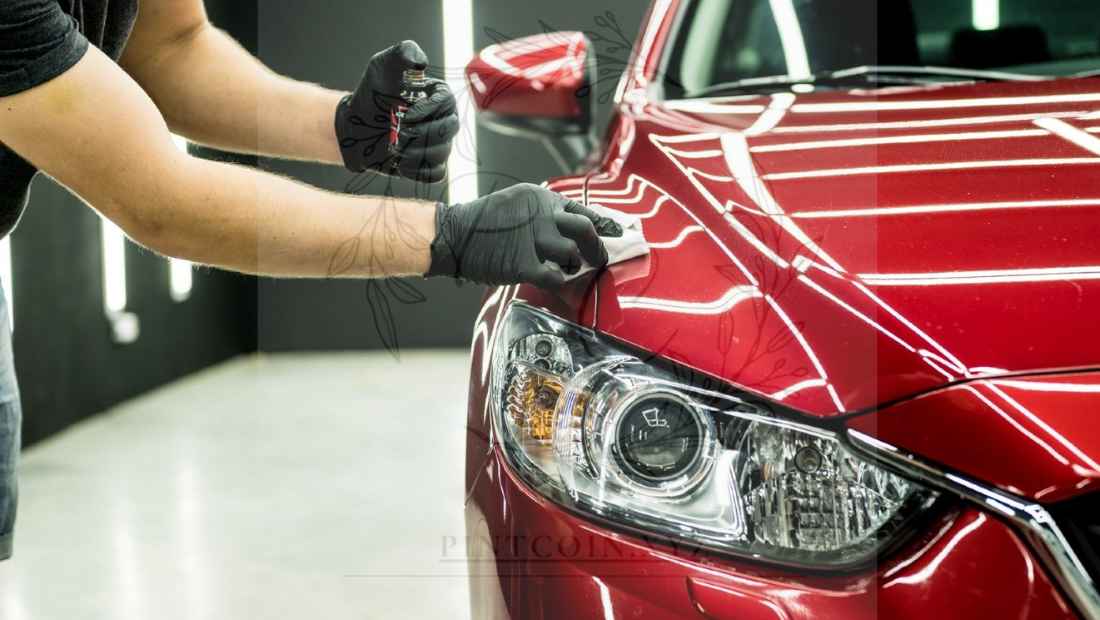Blog
Ceramic Coating for Cars: The Key to a High-Gloss Finish and Easy Maintenance
When it comes to maintaining your car’s appearance, the battle against dirt, water spots, bird droppings, and environmental contaminants is an ongoing one. Traditional waxes and sealants provide some protection, but they often need to be reapplied regularly and don’t offer long-lasting results. Enter ceramic coating for cars—a game-changing solution that provides a high-gloss finish, enhances paint protection, and makes car maintenance easier than ever before.
In this guide, we will explore everything you need to know about ceramic coatings for cars, from how they work to the benefits they offer. Whether you’re a car enthusiast looking to preserve your vehicle’s pristine condition or simply want a low-maintenance option for your everyday car, ceramic coatings can provide the solution you’ve been looking for.
What is Ceramic Coating for Cars?
Ceramic coating for cars is a liquid polymer applied to the exterior surfaces of your vehicle. It chemically bonds with the factory paint to form a protective layer. This layer creates a hydrophobic surface, meaning it repels water and prevents contaminants from sticking to the paint. As a result, your car remains cleaner for longer, with less effort required to maintain its shine.
Ceramic coatings are primarily made of silica (SiO2) or quartz, both of which are natural minerals that provide exceptional durability and protection against the elements. Once applied and cured, this layer creates a hard, glossy finish that enhances the vehicle’s paintwork while providing superior resistance to scratches, water stains, UV rays, and other contaminants.
How Does Ceramic Coating Work?
The science behind ceramic coatings lies in its molecular structure. The silica or quartz molecules in the coating create a strong bond with the paint surface, forming a thin yet durable layer that provides protection. Here’s how the process works:
- Hydrophobic Effect
One of the most significant advantages of ceramic coating is its hydrophobic properties. Water simply beads up and rolls off the surface, taking dirt, grime, and contaminants along with it. This keeps the car cleaner for longer and makes washing easier. It’s like creating a self-cleaning surface. - Scratch Resistance
Although ceramic coatings don’t make your car impervious to scratches, they do offer a significant level of protection. The coating adds a layer of hardness to the paint, which makes it more resistant to light scratches and swirl marks caused by washing or debris. - UV Protection
The UV rays from the sun can cause oxidation, fading, and discoloration of your car’s paint over time. Ceramic coatings protect the paint by blocking UV rays and preventing the oxidation process, preserving the vibrant color and gloss of your vehicle. - Ease of Cleaning
Thanks to the hydrophobic layer, washing your car becomes much easier. Since contaminants don’t stick to the surface, they can be wiped away with minimal effort. Regular washing is all it takes to keep your car looking pristine, reducing the time and effort spent cleaning. - Chemical Resistance
Ceramic coatings provide a layer of protection against various chemicals, including tree sap, bird droppings, and road salts. These contaminants are easier to remove from a surface coated with ceramic, reducing the risk of long-term damage.
Benefits of Ceramic Coating for Cars

The advantages of applying a ceramic coating to your car are numerous, ranging from aesthetic improvements to long-term paint protection. Here are some of the key benefits:
- High-Gloss Finish
One of the most immediate and visually noticeable benefits of ceramic coating is the high-gloss finish it imparts to your car. The coating enhances the depth and richness of your vehicle’s paint, giving it a glossy, reflective shine that looks brand new. - Long-Lasting Protection
Unlike waxes or sealants that may only last a few weeks, ceramic coatings offer long-lasting protection. Depending on the product, a well-maintained ceramic coating can last anywhere from 2 to 5 years, making it a more cost-effective option in the long run. - Reduced Water Spotting
Water spots are a common issue for car owners, especially when washing or during rain showers. Since ceramic coatings repel water, they reduce the likelihood of water spots forming on the surface, keeping your car looking cleaner for longer. - Easier Maintenance
With traditional waxes and sealants, frequent reapplications are necessary to maintain the car’s protection. Ceramic coatings eliminate the need for regular upkeep. After the initial application, the coating acts as a durable layer of protection, reducing the need for regular reapplication. - Enhanced Scratch Resistance
Although no coating can make your vehicle completely scratch-proof, ceramic coatings add a layer of protection that helps resist minor scratches and swirl marks, which are often caused by improper washing or exposure to debris. This is especially beneficial for maintaining a pristine finish over time. - Increased Resale Value
A car with a ceramic-coated finish not only looks better but is also protected from the damaging effects of environmental factors. A well-maintained vehicle with a glossy, scratch-free finish is more likely to fetch a higher resale value. - UV Protection
UV rays can cause significant damage to your vehicle’s paint over time, leading to fading, oxidation, and deterioration. Ceramic coatings protect against these harmful rays, preserving the paint and ensuring that your car maintains its vibrancy.
How to Apply Ceramic Coating for Cars
Applying ceramic coating can be a DIY project for car enthusiasts, or you can choose to have it professionally applied by an auto detailing shop. Here’s a basic overview of how the application process works:
- Surface Preparation
Before applying the ceramic coating, the surface of the vehicle must be thoroughly cleaned and decontaminated. This includes washing the car to remove dirt, tar, and grime, followed by claying the surface to remove embedded contaminants. Any scratches or imperfections should be polished before applying the coating to ensure a smooth, even finish. - Application
Once the surface is clean and dry, the ceramic coating is applied using an applicator pad. The coating should be applied in small sections at a time, using a cross-hatch pattern to ensure even coverage. It’s important to work in a well-ventilated area, as the coating can release fumes during application. - Curing
After the coating is applied, it must be allowed to cure for a specified period of time (usually 12 to 24 hours). During this time, the coating hardens and bonds with the paint surface, providing the durable protection that ceramic coatings are known for. - Buffing and Finishing
Once the coating has cured, the surface is buffed to remove any excess product and ensure a smooth, glossy finish. The car is then allowed to fully cure for several days, during which time the ceramic coating will continue to bond with the paint.
How Long Does Ceramic Coating Last?
One of the most attractive features of ceramic coatings is their longevity. When properly applied and maintained, a ceramic coating can last anywhere from 2 to 5 years. The lifespan depends on several factors, including:
- Type of Coating: Some ceramic coatings are designed for shorter-term use, while others are formulated for long-lasting protection.
- Application Quality: The longevity of the coating is heavily influenced by the quality of the application process. Professional-grade applications often last longer than DIY applications.
- Maintenance: While ceramic coatings reduce the need for frequent maintenance, proper care, such as regular washing and avoiding harsh chemicals, can extend the lifespan of the coating.
DIY vs. Professional Ceramic Coating
While DIY ceramic coating kits are available, professional application may offer additional benefits, such as a more thorough cleaning and a longer-lasting finish. Professional-grade coatings are generally more durable and often include a warranty. However, if you have the time and patience, a DIY ceramic coating can provide excellent results at a lower cost.
- DIY Application
DIY ceramic coating kits typically come with step-by-step instructions. These kits are ideal for car enthusiasts who want to save money and are willing to invest time in ensuring the correct application. - Professional Application
Professional ceramic coating services provide more advanced equipment and expertise, ensuring the coating is applied correctly and evenly. This option is more expensive but may be worth the investment if you want the highest level of protection.
Conclusion: The Ultimate Solution for Car Paint Protection
Ceramic coating for cars offers a high-gloss finish, long-lasting protection, and easy maintenance. It’s the ultimate solution for car owners who want to maintain the beauty of their vehicle while protecting it from the harsh elements. Whether you’re looking to preserve your car’s value, reduce maintenance time, or simply enjoy a cleaner, shinier vehicle, ceramic coatings provide an exceptional level of protection that traditional waxes and sealants can’t match.
Investing in ceramic coating is an investment in your car’s longevity, ensuring that it remains in excellent condition for years to come. Whether you choose a DIY kit or opt for professional installation, the results will speak for themselves in the form of a car that looks new longer, is easier to clean, and is more resistant to environmental damage. If you want to enhance your car’s appearance and protect its paint from wear and tear, ceramic coating is the way to go.


